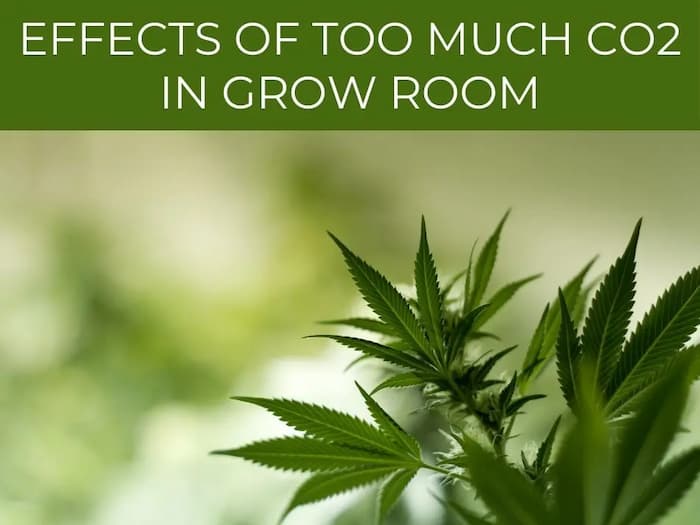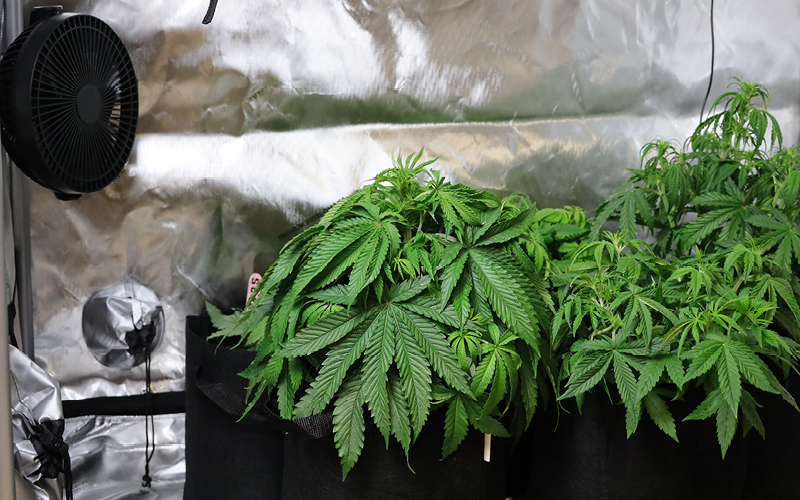Indoor gardeners are always looking for new and innovative ways to increase their yields. In fact, there is a very simple way to maximize yield and grow strong and healthy plants, and that is by adding carbon dioxide to your growing space. There are two main benefits of using carbon dioxide in an indoor garden: higher yields and faster growth. In this article, we will discuss
What exactly is carbon dioxide? and what it does for grow room.
Table of Contents
What is Carbon Dioxide (CO2)?
Carbon dioxide is what we expel when we breathe and what plants use to initiate the function of photosynthesis. Plants actually “take in” carbon dioxide during the day, but release it at night. CO2 concentration is measured in PPM (parts per million), and indoor ambient concentrations are usually between 300-400ppm. Assuming adequate circulation in your grow chamber, you should be able to achieve an atmospheric standard of 390 PPM. At this level, you should see plant growth similar to what you see in the garden.
If carbon dioxide levels drop below 200 ppm, your plants will stop growing.

The Benefits of Adding CO2 to your Grow Room
- The bigger the yield, the faster the growth – if you’ve maximized other limiting factors (especially light), carbon dioxide can make your plants grow faster and increase yields.
- Plants can tolerate higher temperatures—a carbon dioxide-rich environment makes them more resistant to heat. Keeping carbon dioxide levels in the air at 1200-1500 PPM, cannabis plants can withstand temperatures as high as 95°F (30°C). For growers with a lot of hot, bright light, this makes it easier to keep the temperature within what the plants can handle.
- Safety – CO2 enrichment involves sealing your grow chamber, which is good for safety as you won’t be venting hot air or odors. Certain methods of adding carbon dioxide, such as using a carbon dioxide generator, also produce odors that help directly mask the smell of marijuana.
- HPS grow lights are very effective – adding CO2 works best in high-temperature environments, and grow lights are powerful and produce lots of infrared light. Plant growth can be increased by 20% when CO2 is added to HPS. Other HIDs, such as LEC/CMH grow lights, also get a big boost from the extra CO2. Large LEDs are growing at a moderate rate, especially in the thermal growth space. Small LED or fluorescent grows lights (CFL or T5) benefit the least from CO2 enrichment.
Disadvantages of Adding Extra CO2
- Not effective for some grow lights – adding CO2 won’t work if you don’t have high light. You’ll need HPS, LEC/CMH or powerful LED grow lights to produce bright enough light for your plants to get more out of the extra CO2. Small LEDs, CFLs, and T5s are often not powerful enough to get good results with CO2 emissions.
- Heat Required – Supplementary CO2 is more efficient when temperatures are above 85°F (27°C). Plants need heat for additional photosynthesis. Adding CO2 to a cold growth chamber will not have a significant effect. If your growing space is cold, adding heat may make plants grow faster than adding carbon dioxide.
- Seal the growth chamber – adding only a small amount of CO2 does not require a sealed chamber, but if you are trying to maintain high CO2 levels (like the recommended 1200-1500 PPM), you should seal the growing area to prevent CO2 leaks.
- Cost – If you want to inject a lot of carbon dioxide into the growing area, the cost of starting the job can be high. The cheapest ways to add CO2 aren’t cost-effective in the long run, but they can be a good way to ‘feel’ and try CO2. The best CO2 emitters are a bit expensive to start with, but they become more cost-effective once you have your initial supply. That said, big-growth operators should consider all production-boosting options before investing in CO2, as other changes (like dialing up in a growth environment) could have a bigger impact with less money.
How Much CO2 Do You Need?
You’ve decided that you want to add carbon dioxide, but how much?
When growing cannabis, maintain 1200-1500 PPM CO2 in the grow room for best results
Millions of years ago, when plants evolved, carbon dioxide levels in the air were much higher than they are today. As a result, plants have evolved the ability to use large amounts of CO2, up to 1500 ppm (parts per million), during photosynthesis.
Although CO2 concentrations in the air today are much lower at around 400 PPM, plants are still able to utilize CO2 concentrations as high as 1500 PPM, allowing them to generate more energy from the same amount of light. When carbon dioxide deficiency is the current limiting factor, growers can take advantage of this growth by providing additional carbon dioxide.
This means that for CO2 enrichment to be most effective, you should maintain CO2 concentrations up to 1500 ppm in very brightly lit growth spaces.
Applying CO2 in Your Grow Room
Because there won’t be a naturally large amount of carbon dioxide in your grow room, you can supplement carbon dioxide in the garden. If you’re ready to use it, first prepare a meter that can read the PPM of carbon dioxide in the growth chamber environment.
It is ideal to keep the CO2 concentration around 1200-1500 PPM, but as the CO2 concentration in the environment increases, you will want to keep the temperature higher. Keeping the temperature between the mid-70s (21°C) and the 80s (26°C) won’t do much because your plant needs the ability to absorb, process, and expel what it’s sucking in. As the temperature of the grows room increases, the metabolic rate of the garden allows each plant to grow quickly and efficiently. Don’t be surprised if your plants need temperatures around 85-95°F (29-35°C) to properly handle light and nutrients.
(Note: keep in mind that smaller growth chambers do not need and cannot use such high CO2 levels, so adjustments will be required. Also, the lower the PPM, the lower the average to maximum temperature range)
How to Add CO2 to your Grow Room

Using an exhaled CO2 bag is the most natural and easiest way to add CO2 to your grow room. The expiratory carbon dioxide bag cultivates carbon dioxide 24 hours a day without the need for re-bottling or the use of expensive production equipment.
They work through photosynthesis – the process by which plant leaves produce carbohydrates. Sunlight, carbon dioxide, and water are converted into carbohydrates and oxygen by the action of chlorophyll in plant chloroplasts. Plants were grown indoors under artificial light often lack enough carbon dioxide for efficient photosynthesis. When plants are able to make the most of the photosynthesis process, the result is larger plants and higher yields.
Conclusion
A plant’s leaves always contain a certain amount of water and energy, and carbon dioxide helps release that energy, helping the plant thrive. It is ideal to keep the CO2 concentration around 1200-1500 PPM, but as the CO2 concentration in the environment increases, you will want to keep the temperature higher.

















